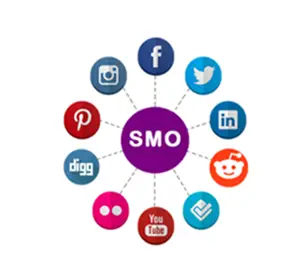I. Introduction
A. Brief Overview of ISO 14001 Certification
The International Organization for Standardization (ISO) developed the ISO 14001 Certification as a globally recognized framework for Environmental Management Systems (EMS). This certification establishes a systematic approach for organizations to identify, manage, monitor, and improve their environmental performance. It provides a structured set of guidelines that businesses can adopt to minimize their impact on the environment and demonstrate a genuine commitment to sustainable practices.
B. Importance of Environmental Sustainability in Modern Business
As our planet faces unprecedented environmental challenges, the business landscape is evolving to recognize the significance of incorporating sustainable practices. Consumers are increasingly making choices based on a company’s commitment to environmental responsibility, and regulatory bodies are tightening requirements for businesses to adhere to eco-friendly standards. Acknowledging and addressing environmental concerns not only aligns with ethical principles but also positions businesses as responsible stewards of the environment, fostering goodwill among consumers and stakeholders.
C. The Role of ISO 14001 in Fostering Harmony between Business and the Environment
ISO 14001 plays a pivotal role in bridging the gap between business operations and environmental preservation. By providing a structured framework, this certification enables organizations to integrate sustainable practices seamlessly into their daily activities. It encourages a proactive approach to environmental management, ensuring that companies not only comply with regulations but also actively strive to minimize their ecological footprint.
II. Understanding ISO 14001 Certification
A. What is ISO 14001 and its Significance
ISO 14001 is a globally recognized standard by the International Organization for Standardization (ISO), outlining the requirements for an effective Environmental Management System (EMS). This certification signifies a company’s commitment to sustainable business practices and proactive environmental stewardship.
B. Key Principles and Requirements of ISO 14001
ISO 14001 is built on key principles, including understanding the organization’s context, leadership commitment, planning, resource support, operational execution, performance evaluation, and continuous improvement. These principles provide a flexible yet robust framework for environmental management.
C. How ISO 14001 Aligns with International Environmental Standards
ISO 14001 aligns and complements other international standards, fostering a cohesive and integrated approach to sustainability. It harmonizes with standards such as ISO 9001 and ISO 45001, creating a unified management system that addresses various aspects of a business’s operations. This alignment enhances global credibility and ensures adherence to internationally recognized environmental standards.
III. Benefits of ISO 14001 Certification
A. Environmental Impact Reduction and Conservation
ISO 14001 Certification empowers organizations to minimize their environmental footprint systematically. By identifying and addressing aspects of their operations with significant environmental impact, businesses can reduce resource consumption, waste generation, and emissions. This commitment to environmental conservation goes beyond compliance, contributing to the broader global effort to preserve our planet.
B. Cost Savings and Operational Efficiency
Implementing ISO 14001 often leads to enhanced operational efficiency and, consequently, cost savings. By optimizing resource use, streamlining processes, and minimizing waste, organizations can experience financial benefits. Reduced energy consumption, improved supply chain efficiency, and better waste management practices contribute to both economic and environmental sustainability.
C. Improved Corporate Image and Reputation
ISO 14001 Certification is a powerful tool for enhancing a company’s corporate image and reputation. Consumers, investors, and stakeholders increasingly value environmentally responsible businesses. By displaying a commitment to sustainable practices, organizations can build trust, attract environmentally conscious customers, and differentiate themselves in a competitive market.
D. Regulatory Compliance and Risk Management
ISO 14001 ensures that organizations stay ahead of environmental regulations, minimizing the risk of legal issues and financial penalties. The systematic approach to compliance embedded in the certification process helps businesses identify and address potential risks early on. Proactive risk management not only ensures legal conformity but also prepares companies to adapt to evolving environmental regulations effectively.
IV. Steps to Achieve ISO 14001 Certification
A. Preparing for Certification: Assessing Current Practices
Before pursuing ISO 14001 Certification, businesses must evaluate their current environmental practices. This involves identifying operational aspects with environmental impacts, assessing existing procedures, and understanding relevant legal requirements.
B. Developing an Effective Environmental Management System (EMS)
The core of ISO 14001 lies in establishing a robust EMS. Organizations need to define environmental objectives, create procedures for implementation, and set up monitoring structures tailored to their unique context.
C. Implementation Strategies and Employee Engagement
Achieving ISO 14001 Certification requires a comprehensive strategy involving all levels of the organization. Training employees on environmental policies, cultivating an eco-conscious culture, and establishing communication channels for feedback are crucial steps to ensure collective commitment and a successful EMS.
D. Navigating the Certification Process with Accredited Bodies
Navigating the certification process involves close collaboration with accredited certification bodies. Organizations must prepare documentation demonstrating ISO 14001 compliance and undergo audits to assess EMS effectiveness. Successful completion results in the issuance of ISO 14001 Certification.
V. Overcoming Challenges in ISO 14001 Implementation
A. Common Obstacles Businesses Face During Certification
Achieving ISO 14001 Certification can be met with various challenges. Common obstacles include initial resistance to change, resource constraints, and difficulties in aligning existing processes with environmental management requirements. Identifying and understanding these challenges is crucial for developing effective strategies to overcome them.
B. Strategies for Overcoming Resistance and Fostering a Culture of Sustainability
Resistance to change is natural, but it can hinder the successful implementation of ISO 14001. To address this, businesses can employ strategies such as comprehensive communication, engaging employees in the decision-making process, and showcasing the long-term benefits of environmental responsibility. Fostering a culture of sustainability involves making eco-friendly practices a part of the organizational DNA, inspiring employees to actively contribute to environmental goals.
C. Continuous Improvement and Adapting to Changing Environmental Standards
ISO 14001 emphasizes continuous improvement, requiring organizations to adapt to evolving environmental standards. Implementing feedback loops, regular assessments, and staying informed about industry best practices are essential for ensuring that the EMS remains effective over time. Flexibility in approach allows businesses to proactively respond to changes in regulations and environmental expectations.
VI. Future Trends in Environmental Management
A. Emerging Trends in Environmental Sustainability
As the world continues to address pressing environmental concerns, several emerging trends are shaping the future of sustainability. These include a heightened focus on circular economies, increased use of renewable energy sources, and a growing emphasis on corporate transparency regarding environmental impact. Understanding these trends is crucial for organizations seeking to stay ahead in their environmental management practices.
B. The Role of ISO 14001 in Adapting to Future Challenges
ISO 14001’s flexibility positions it as a valuable tool for organizations preparing for future environmental challenges. The standard’s adaptability allows businesses to integrate emerging sustainability practices seamlessly. ISO 14001 provides a framework for proactively addressing new regulations, technologies, and global expectations, ensuring that organizations remain at the forefront of environmental stewardship.
C. Technologies and Innovations Shaping the Future of Eco-Friendly Business Practices
Advancements in technology play a pivotal role in shaping the future of eco-friendly business practices. From data analytics to artificial intelligence, innovative solutions are aiding organizations in optimizing resource use, reducing waste, and enhancing overall environmental performance. ISO 14001 complements these technologies by providing a structured framework for their integration, ensuring that businesses can leverage the latest innovations to achieve and exceed their environmental objectives.
VII. Conclusion
A. Summarizing the Key Points Discussed
In this exploration of ISO 14001 Certification and its impact on environmental management, we’ve covered the essentials. From understanding the significance of ISO 14001 to exploring the benefits, steps to certification, overcoming challenges, and future trends, our journey has illuminated the path toward sustainable and responsible business practices.
B. Reinforcing the Importance of ISO 14001 Certification for Businesses
ISO 14001 Certification is not merely a badge of compliance; it’s a commitment to a harmonious coexistence between business operations and environmental preservation. The benefits, ranging from environmental impact reduction to improved corporate reputation, underscore the vital role that ISO 14001 plays in shaping responsible and forward-thinking organizations.
C. Encouraging Businesses to Embrace Sustainability for a Harmonious Future
As we conclude, the call to action is clear: businesses should embrace sustainability as a guiding principle. ISO 14001 provides a structured pathway for organizations to navigate the complexities of environmental responsibility and sets the stage for a harmonious future. By integrating sustainable practices into their core values, businesses not only contribute to global environmental well-being but also position themselves as leaders in a world where conscious consumerism and corporate responsibility are integral to success.







